It is said that a fool and their money are soon parted. If you believe those within his inner circle, that saying best describes the attitude Enzo Ferrari had towards people purchasing his road cars. “il Commendatore” had no overwhelming passion for such vehicles but saw them as little more than a tool designed to raise the money to fund his beloved racing team. The first Ferrari emerged from his factory in 1947, and the low build totals during those early years reflected the funds the great man required to keep racing. Production totals rose slowly; by 1953, more than fifty cars emerged from the company’s Maranello factory. The company built twenty-two examples of the 250 Europa that year, but only three received bodies designed and produced by the renowned coachbuilders Vignale. This is one of those cars, and after leading a colorful life, a dedicated enthusiast undertook a meticulous restoration to return it to its original form. The Europa is listed here on ISSIMI in San Carlos, California. It could be yours for a cool $4.8 million, and I must say a big thank you to Barn Finder Araknid78 for spotting this fantastic Italian classic.
For many years, Ferrari didn’t design or manufacture its own bodies for its cars. That task fell to coachbuilders such as Bertone, Ghia, Pinin Farina, Scaglietti, and Zagato. Most early cars featured bodies by Touring, but Enzo began sending more work toward Vignale. It proved a fruitful working relationship for a company that only commenced operations in 1948. Between 1950 and 1954, Vignale created bodies for more than 150 Ferraris, but the limited nature of production meant that no model received more than twelve copies of the same body. Companies like Pinin Farina created styling that many saw as more conservative and almost austere, but those emerging from Vignale were more flamboyant. Bright trim, scoops, and recessed lights were hallmarks of its designs, as seen on this 250 Europa. Only three of these cars emerged in 1953, and all varied in some way. This is the second of the three and has led quite a life. It was initially dispatched to Luigi Chinetti in Manhattan and was the first Ferrari sent directly from the factory to North America. Chinetti displayed the car at the 1954 New York Motor Show before performing a repaint in Red with a Black roof and selling it to a buyer in Massachusetts. It subsequently passed through the hands of several owners, undergoing another color change to an unspecified shade of Purple. Another color change to Red occurred in 1968 before it entered storage in the late 1970s. The Ferrari emerged from hibernation in 2003, changing hands again in 2009. Its new owner was an avid Ferrari enthusiast, undertaking a restoration to recapture its appearance and condition on the day it rolled out of the factory in Maranello. The attention to detail included sourcing the correct nitrocellulose paint to recapture the car’s former glory. More than a decade has passed, but its paint combination of Tabacco with a Bruno Siena roof still shines brightly. A close inspection will reveal the overall condition is stunning, with few faults or imperfections. The bright trim looks gorgeous, but even this has a story attached. One of the car’s owners scrapped the original bumpers in favor of nerf bars, and since these cars aren’t thick on the ground, sourcing replacement bumpers was impossible. What do you do in such circumstances? You employ a specialist to create perfect replicas. The process would not have been cheap, but the result was worth the effort. The glass is spotless, as are the beautiful Borani wheels.
Years of hard living had left the Ferrari’s interior tired and worn. The 2009 restoration included a complete retrim in Tan leather, with the owner sourcing the material from the company that supplied the original hides to Ferrari. Leather covers the seats, door trims, and dash pad. The matching carpet is spotless, as is the beautiful timber wheel. The owner’s attention to detail extended to the recreation of the netting headliner-mounted map pockets. If you peel away the layers of this interior, the door cards use the correct material and insulation that Ferrari employed. The etched bright trim on areas like the dash pad edging is a hallmark of Vignale interiors and something you won’t see in the more conservatively styled Pinin Farina models. Words hardly do the interior justice, so I added a few photos in the gallery at the bottom of this story.
It is fascinating how some manufacturers will attach themselves in a limpet-like fashion to a specific engine configuration and will only reluctantly change tack. Henry Ford had little time for anything but four-cylinder powerplants. For Enzo Ferrari, the magic number was twelve. Regardless of whether a Flat or Vee formation, he believed every engine bearing his name should have no fewer than a dozen cylinders. Every “250” model released during this era featured the 2,953cc “Colombo 250” V12, but the Europa was the exception. Powering these cars was the 2,963cc Lampredi V12, which the Europa shared with the company’s 340, 375, and 410 models. It produced 197hp, which fed the rear wheels via a four-speed manual transmission. The motor allowed the car to cover the ¼-mile in 16.3 seconds before winding its way to 135mph. This car retained its original V12 for many years, but one owner made a change that will cause some purists to hyperventilate. They removed the Lampredi powerplant for unknown reasons, substituting a supercharged Corvette V8. It remained this way for many years, but the restorer sourced a correct V12 as part of the build process. They treated it to a complete rebuild, and dyno testing yielded an additional 5hp compared to the figure supplied by the factory. It has recently been thoroughly serviced, making this Ferrari a turnkey proposition for its new owner.
If Enzo Ferrari were alive today, he would probably be astounded by the powerhouse the company bearing his name has become in the exotic world. He would also be amazed at the prices some of his earlier models achieve in the classic market. The asking price for this 1953 Ferrari 250 Europa Vignale is far from pocket change, but it remains well short of the record $48,405,00 paid for a 1962 250 GTO in 2018. However, the low build total means the opportunity to buy a car of this caliber is rare. I doubt it will sell quickly, but I’m sure there is a passionate and wealthy enthusiast who will eventually add it to their collection.
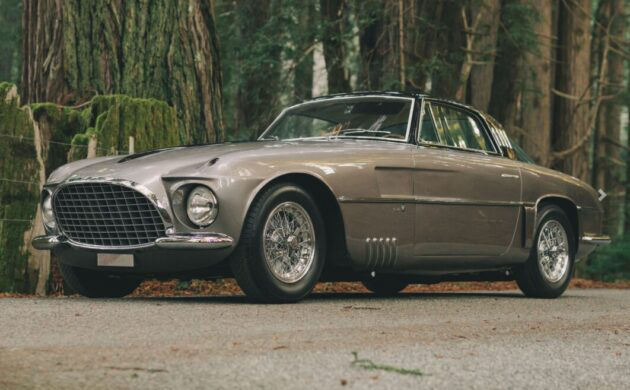
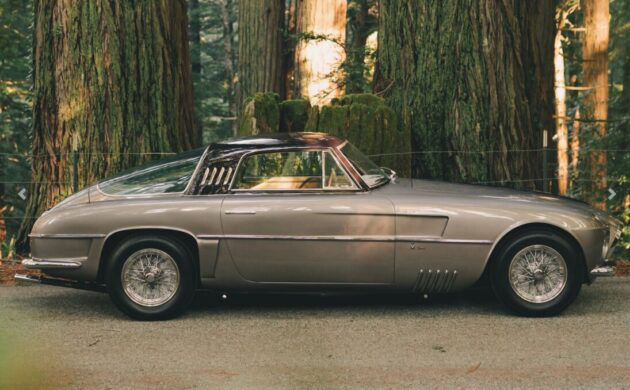


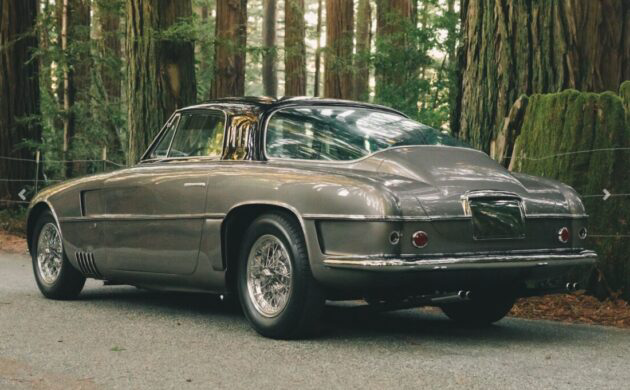
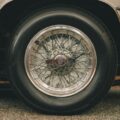


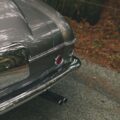
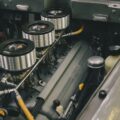










I had never seen an ugly Ferrari till now
I can’t imagine what this must of looked like in 1953 Manhattan – probably more spaceship than car. I think it’s amazing.
Beauty is in the headlight of the beholder!
Looks like a modern Ford grill has been fitted.
Definitely an “in your face” design-polarizing to say the least.
Adam, could you elaborate on the “record $48,405,00 paid for a 1962 250 GTO in 2018”?
Missing a zero. $48.4M
yuk
If Bristol built the Studebaker Hawk.
In 2018 the highest auction price for a 250 GTO was $48.4 million for chassis no 3413 at RM Sotheby’s auction in Monterey.
However that price was topped in a private sale in June 2018 confirmed by Ferrari expert Marcel Massini when David McNeal (CEO of WeatherTech) paid $70 Million for 1963 GTO 4153 one of the 3 or 4 best. Truly beautiful silver GTO with exceptional competition history.
Nick Mason of Pink Floyd states people thought he paid an outrageous amount for his 250 GTO at £90,000 years ago. Of course he still owns it.
Thinking that should read Nick Mason of ‘Saucer Full of Secrets’.
Wow. You either like it, or hate it. I have never claimed to be an expert, or even an amateur at classic European automotive design. This one is new to me. There are things about it I love. The recessed door handles, the scalloped C-Pillars, the raised body line on top of the front fenders, the signature front grill with the split bumpers, the vented scoops in front of the rear wheels, the overall forward design that makes the car look like it is moving standing still, the inlaid inner door handles, the beautiful dash with gauges that look like they are from a timepiece, the engraving on the kick panels, the signature luggage, and of course the beautiful powerplant and the clean and simple compartment that holds it. Now, the things that I don’t care for. The enormous back window. This automobile would look so much better as a standard notchback. The window robs the back of those aesthetically pleasing lines. I look at it and think of a mid-sixties Corvette or Barracuda. I don’t like the single headlights. In my opinion, dual would look so much better. I don’t really care for the “arc” of the body line. It should be broken up to give other attributes of this automobile to stand out. With all that said, you can try and imagine the impression that it made on any one individual when seen. It was the early fifties and automotive design was changing. This certainly was an in your face design for the time. I looked at every photo on the auction site. You cannot deny it is automotive design and engineering at it’s finest. I applaud the owner of putting it back the original as possible. IMHO as a purist.
Bit posh for this pleb- more like something I’d see over at bring a trailer queen
Wild looking car! Can’t even pronounce 4.8 million.
I’ve always been one to buck a trend, so here I go again. I love this car, and can’t believe this was done in 1953… but for the money, no way. I’m a mathematician and I deal in numbers, but this is way outta my league in terms of money.
But I really do like this car.
Not nearly as ugly as the Lagonda, but ugly none the less.
I think it is absolutely stunning!
Putting the into the period. It’s to say the least extreme, in it’s design. When considering the other designs of the day. It’s pretty great looking car. The drive train is the bomb.
I’m an automotive artist. Doing a painting of that car would quite a job. I can’t thin of too many automobiles with that may lines and curves. Yikes! I’ll pass.
Wow!! I wonder if it is on Craig’s List too?
Who on earth would put a Chevy engine in a Ferrari?? If the song of a Ferrari V12 at full throttle doesn’t get your blood pumping, you’re dead.
Same idiots who swap out a V12 Jag motor for an SBC?
Purple ?! & a woofer too !